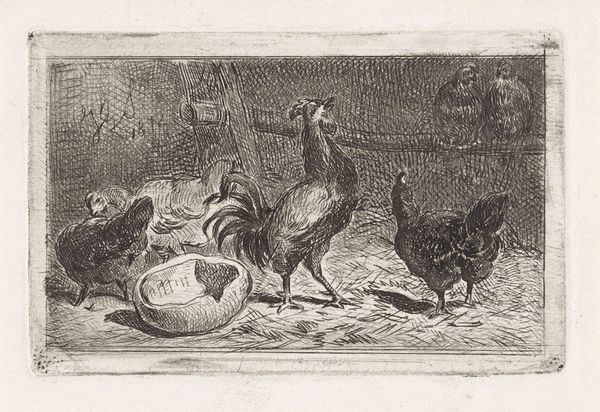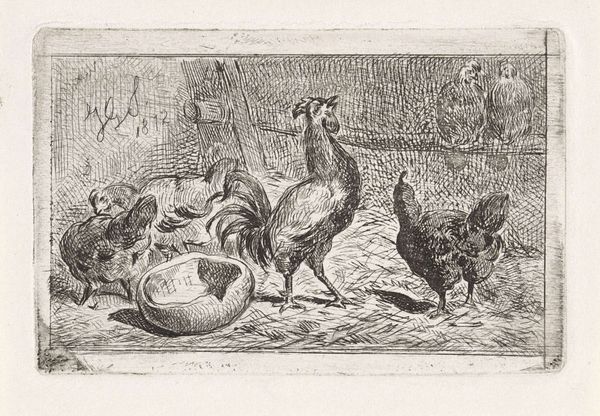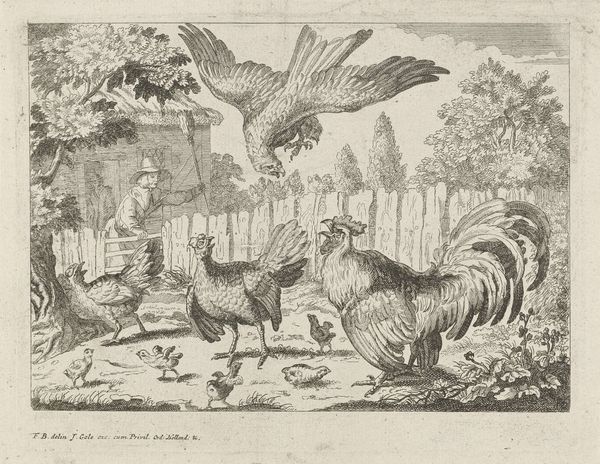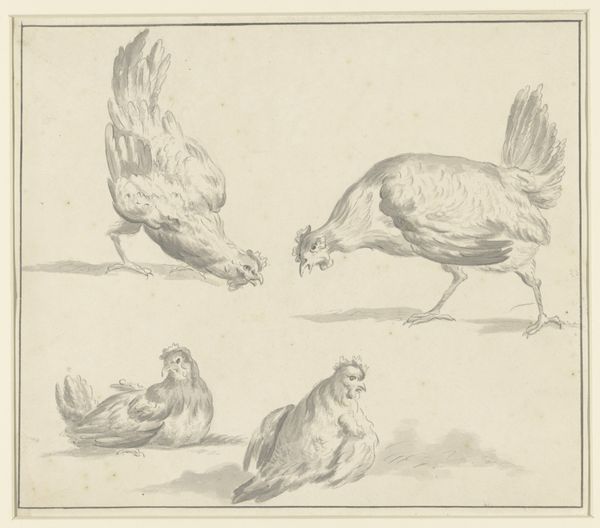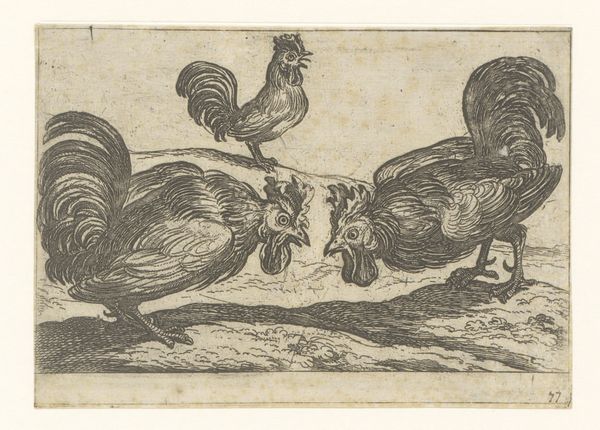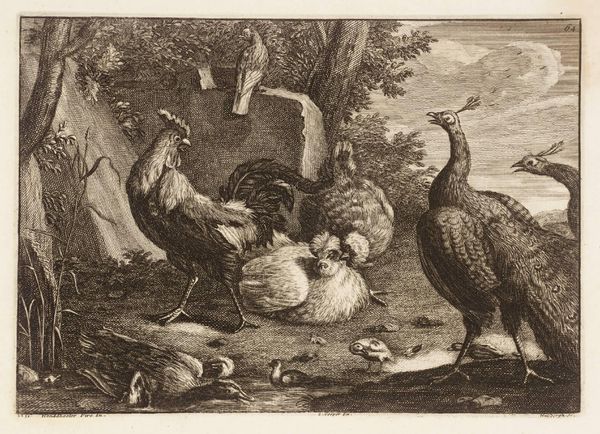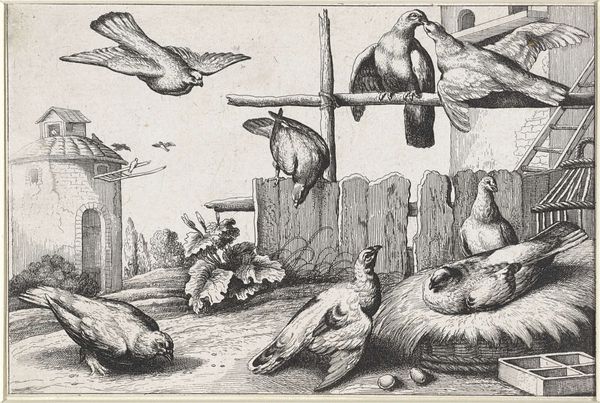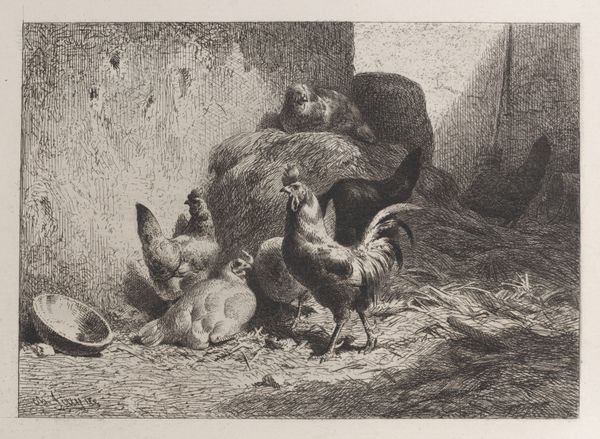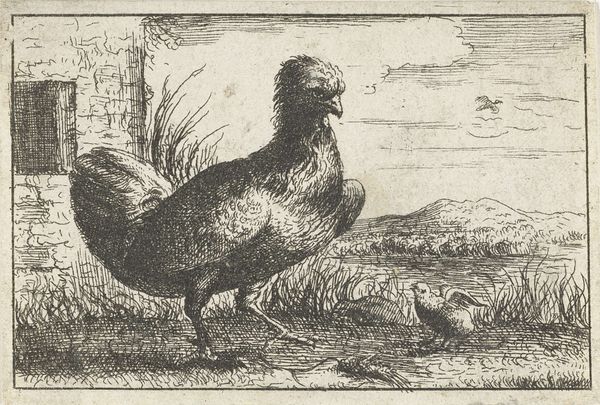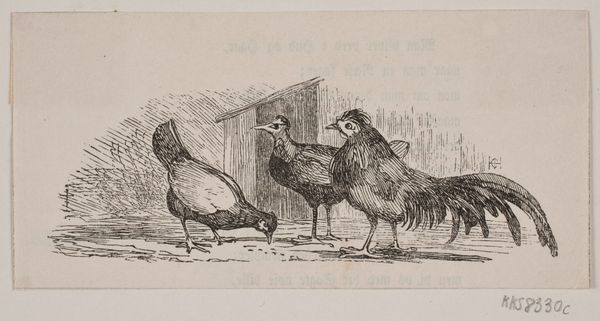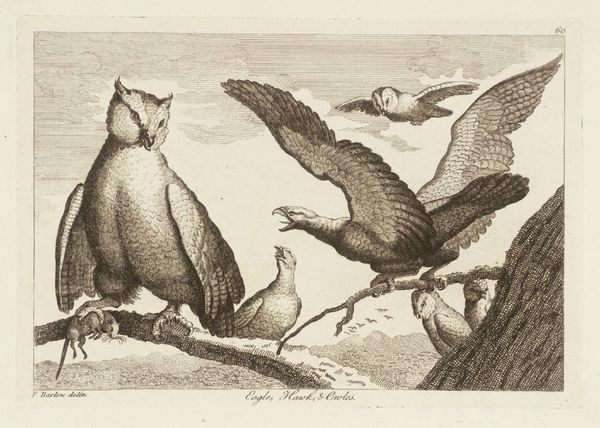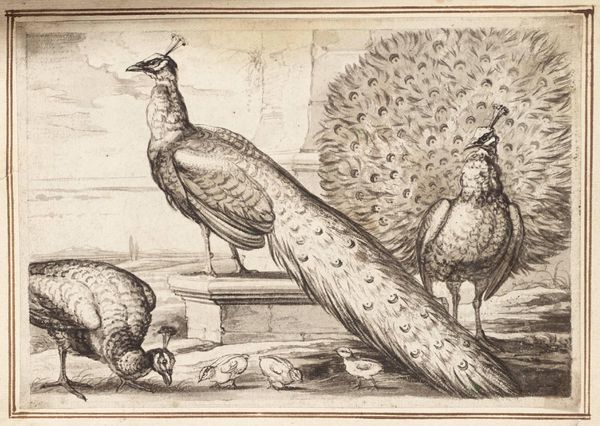
print, etching, engraving
# print
#
etching
#
genre-painting
#
engraving
#
realism
Dimensions: height 70 mm, width 109 mm
Copyright: Rijks Museum: Open Domain
Curator: What we’re looking at is an etching titled "Rooster and Five Hens in a Coop" created by Jan Gerard Smits in 1872. Editor: It feels…intimate, doesn't it? Like peering into a hidden world. There's something almost unsettling about the starkness of the image and the closeness of the chickens. It feels less idyllic and more claustrophobic, which has an emotional impact. Curator: The technique itself – the etching and engraving processes – adds to that, I think. The cross-hatching creates a kind of oppressive texture, mimicking the packed hay on the floor and the closeness of the coop walls. Think of the labor involved, too. Each line is deliberately scored onto the plate. It shows how industrializing process can transform our views of farm labor, perhaps as newly industrialized audiences seek comfort in traditional themes. Editor: Precisely. And the stark black and white – it makes me think about moral parables. Farmyard animals have so often represented human types in folk tales, from Aesop to Chaucer, where the rooster is vanity or virility. What do we make of Smits choosing this imagery? The birds seem frozen and impassive; could these be ciphers for the artist to comment on the quiet and stifled bourgeois existence? Curator: Or is it realism showing how chickens simply *are*, existing as objects to be raised as part of a labor cycle, and how artists use inexpensive, reproductive media, such as etchings, to appeal to rising merchant classes? We can read it multiple ways, of course. But, indeed, Smits’ commitment to portraying these animals with such unsentimental accuracy draws me back to how this piece sits within the broader Realism movement, rejecting idealization, turning to images and forms of life previously considered unworthy of "High Art." It’s like he's saying, "Look, these are creatures we rely on. They have dignity." Editor: It certainly makes you reconsider their value, how something so commonplace becomes something so loaded through observation and art. The material and process add to its narrative weight. Curator: Agreed. There is a symbolic density at play here, one that uses familiar and folksy genre to explore deeper themes about nature, culture, and capital. It is always amazing to find these things combined together to become something beyond representation of fowl. Editor: A fascinating blend of social reality and intimate experience, indeed. One final lingering stare may inspire the mind's inner museum.
Comments
No comments
Be the first to comment and join the conversation on the ultimate creative platform.
